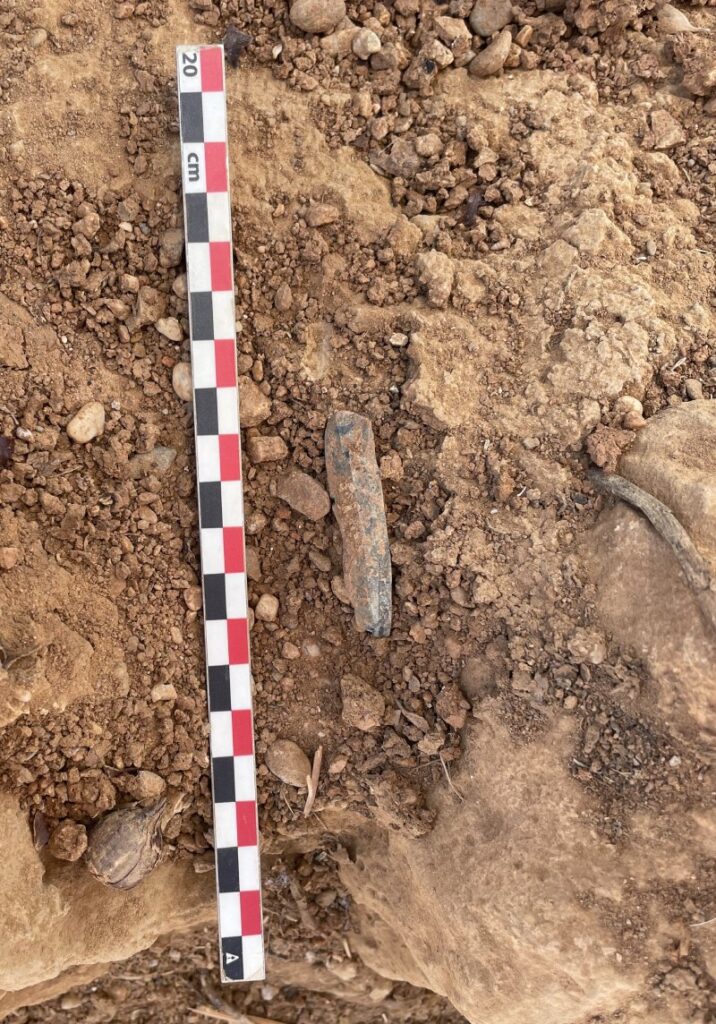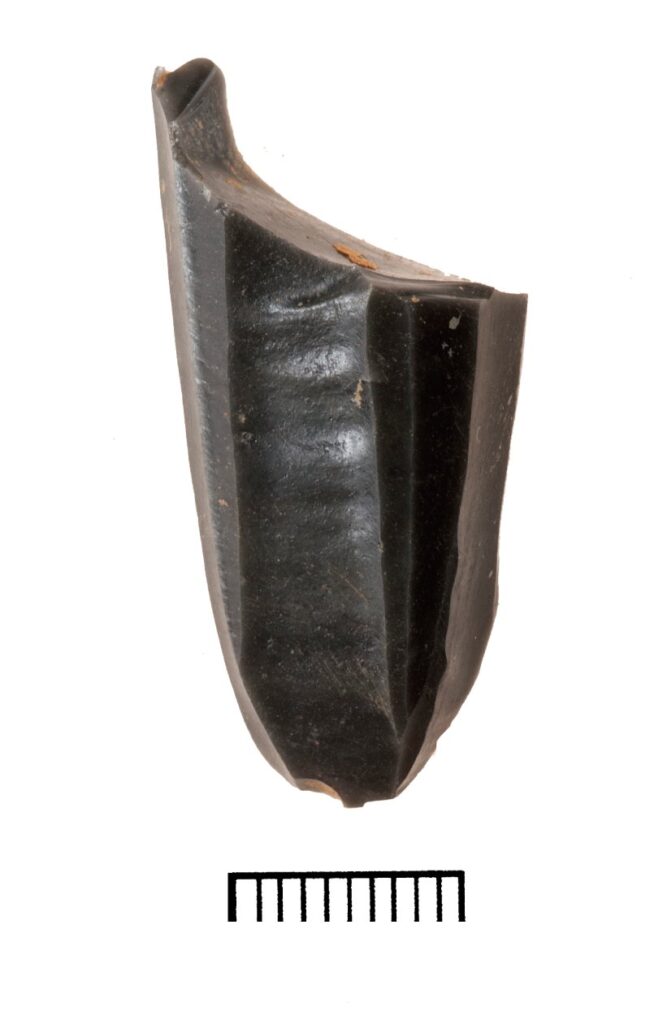Obsidian – which primarily and typically derives from the island of Milos (Cyclades) – was imported to Crete from a very early moment onwards and was transformed on the site of Sissi throughout the Bronze Age to produce razor sharp prismatic blades using the skilled pressure flaking technique. While the aims of the study of obsidian are multifaceted, we ultimately focus on socio-cultural dynamics as much as detailing tool types and contributing to our understanding of the various practices (domestic, ritual inter alia) performed within the site.
This includes a diachronic appraisal of technical specificities, as we have come to appreciate that there are different forms of pressure blade manufacture over time, some of which have quite specific regional, cultural and contextual correlates. For instance, a recent study of a large quantity of EM II material from Sissi (Zone 10, Extension II) detailed the similarity in the size of the blade cores – and the means by which they were prepared and reduced – to a large broadly contemporary assemblage from Mochlos, suggestive of a north-coast tradition / community of practice distinct from other regions in Crete at this time.
We are also interested in the synchronic organisation and character of production, aiming to contribute to recent studies on ‘the Minoan household’, considering intra-community relations via a consideration of which buildings produce evidence for blade production – was this craft distributed evenly amongst the inhabitants, or might we see obsidian working concentrated in the hands of a few, providing such factions with a form of socio-economic dominance/capital?
Tristan Carter
McMaster University

